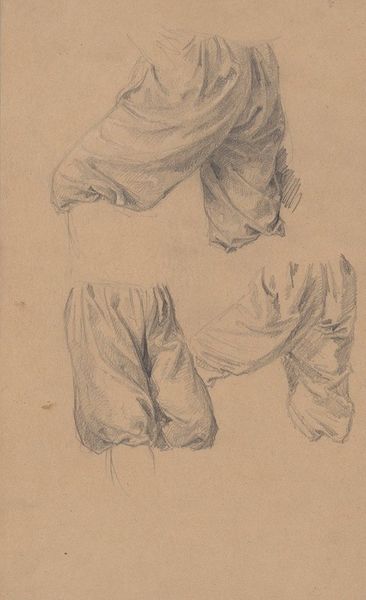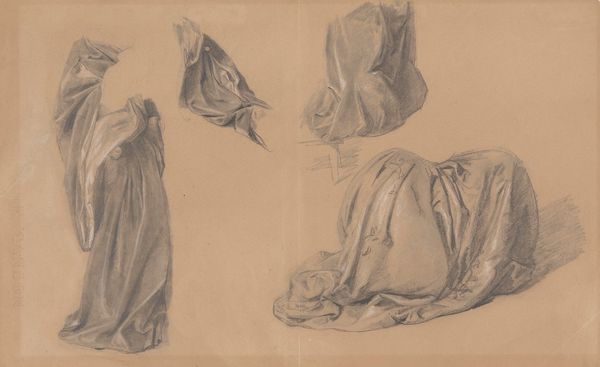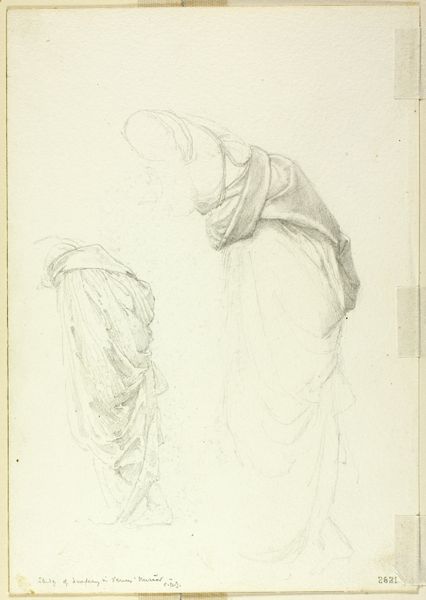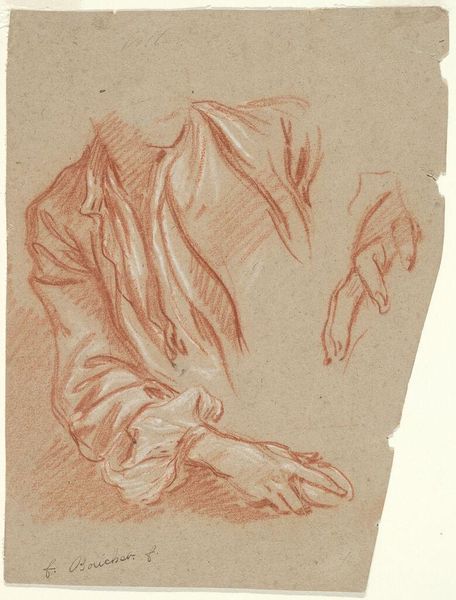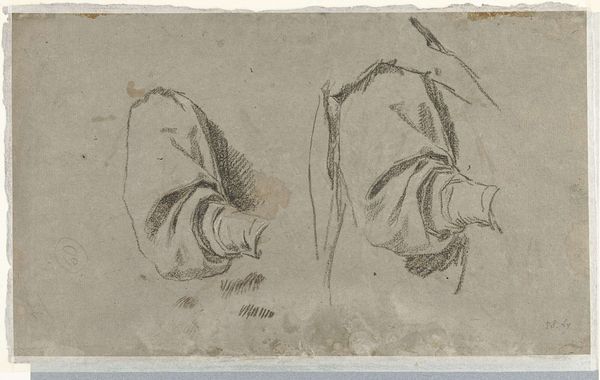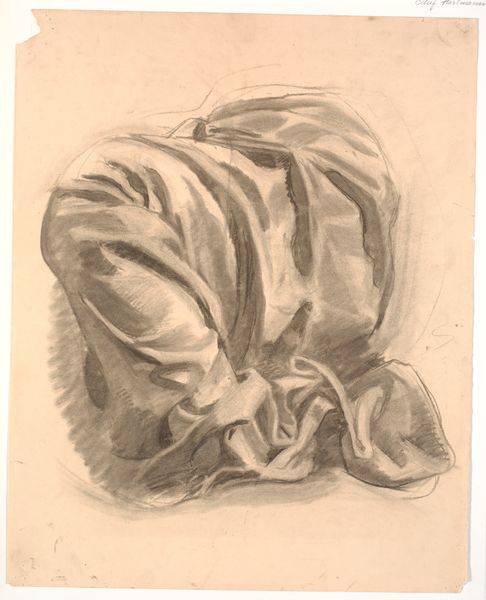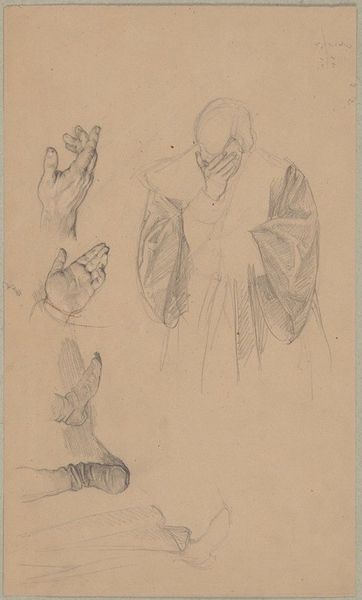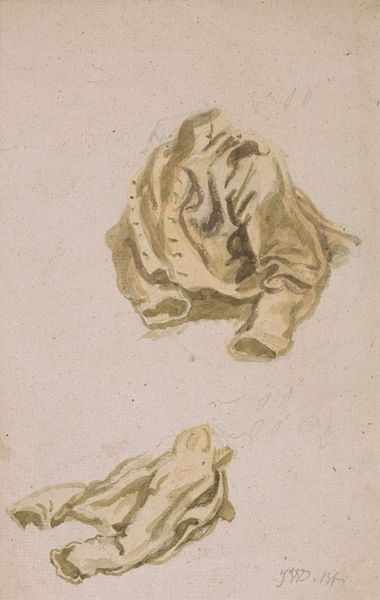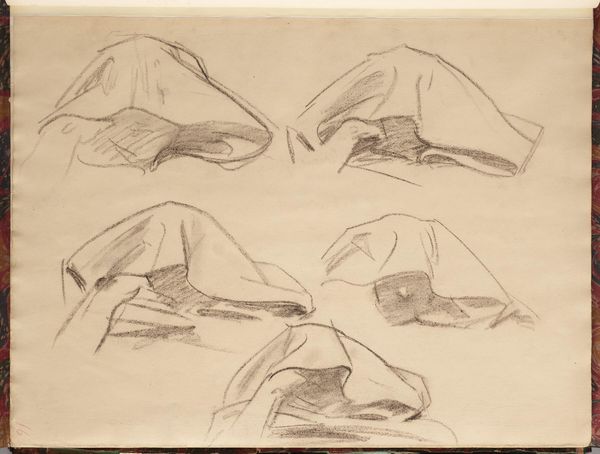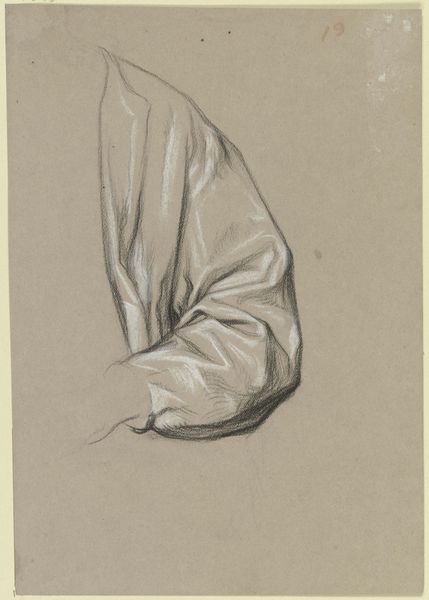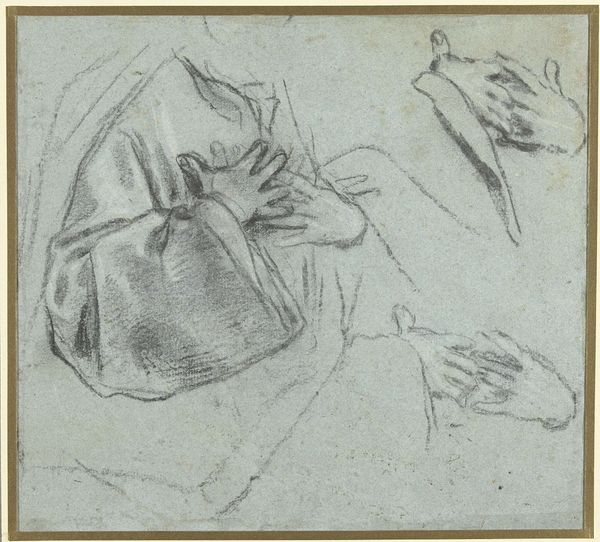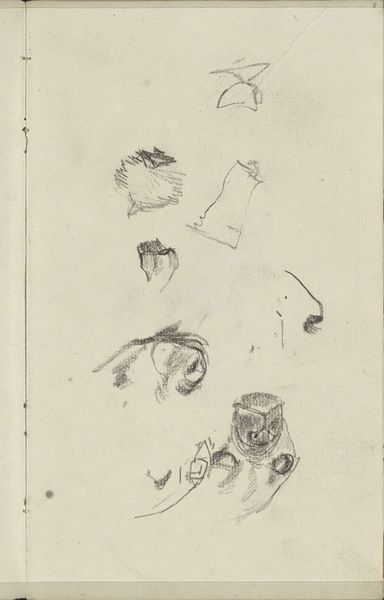
drawing, paper, pencil
#
drawing
#
figuration
#
paper
#
pencil
#
academic-art
Copyright: Public Domain: Artvee
Józef Simmler rendered these studies of tunic fragments with pencil, capturing the classical drapery, which is far more than mere fabric; it is a symbolic language. Observe how the folds cascade and cling, revealing and concealing the form beneath. This motif echoes through art history, from the ancient Greek sculptures to Renaissance paintings. Think of the draped figures in Raphael’s frescoes—the same interplay of light and shadow, the same attempt to convey volume and movement through fabric. But what is it about drapery that holds such enduring appeal? Perhaps it is the way it mimics the natural world—the flow of water, the undulation of sand dunes. Or perhaps it is the way it speaks to our own mortality—a reminder of the ephemeral nature of beauty and the passage of time. As the folds of the tunic shift and change, so too does our understanding of the world around us. The symbol of drapery resurfaces through time, evolving and adapting to each new context, yet always retaining a connection to its origins.
Comments
No comments
Be the first to comment and join the conversation on the ultimate creative platform.

